Founded 1995 Colors Blue, Cyan, Red | ||
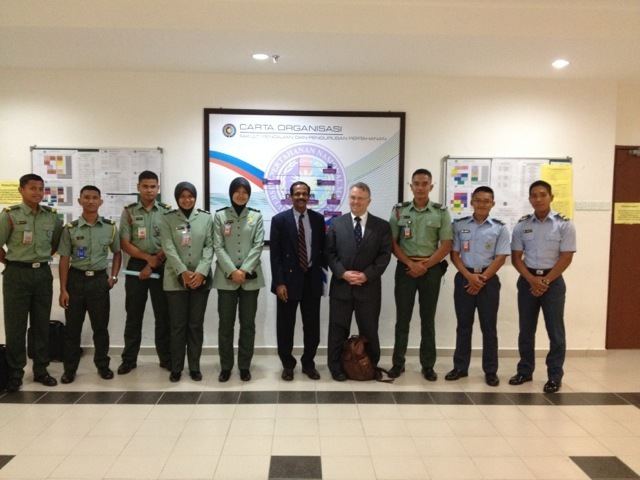 | ||
Motto in English Duty, Honour, Integrity Established 1995 (as Akademi Tentera Malaysia), 2006 (as Universiti Pertahanan Nasional Malaysia) Chancellor Yang di-Pertuan Agong Tuanku Abdul Halim Mu'azam Shah ibni Almarhum Sultan Badlishah (Supreme Ruler of Malaysia) Vice-Chancellor General Tan Sri Hj. Zulkifli Hj. Zainal Abidin Motto Kewajipan, Maruah, Integriti (Duty, Honour, Integrity) Similar Universiti Sains Islam Malaysia, Universiti Malaysia Kelantan, Sultan Idris Education University, Universiti Putra Malaysia, Universiti Sultan Zainal Ab Profiles | ||
National defency university malaysia upnm aerial view
The National Defence University of Malaysia (UPNM; Malay: Universiti Pertahanan Nasional Malaysia) is a military university located in Sungai Besi Camp, Kuala Lumpur, Malaysia. The university is Malaysia's first catering to the needs and development of the Malaysian Armed Forces. There are around 2,700 undergraduate students, with over 1,300 of them Officer Cadets that undergo four to six years of training.
Contents
- National defency university malaysia upnm aerial view
- Rugby sevens masum 7s 2015 final plate iium mustangs vs upnm smookies
- History
- Location
- Academy grounds and facilities
- Cadet quarters
- Residential colleges for civilian students
- Athletic facilities
- Chancellory
- Curriculum
- Academic programme
- Military programme
- Rank
- Organization
- Admission
- Admissions requirements
- Graduation
- References
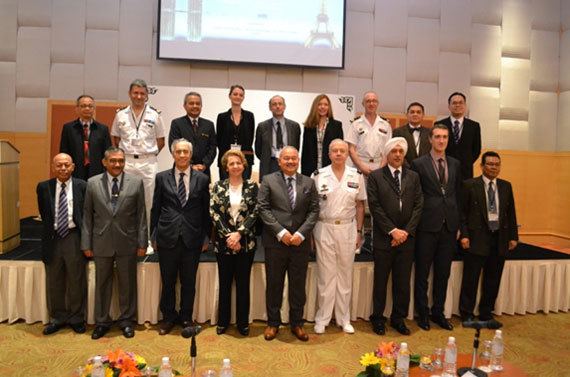
Rugby sevens masum 7s 2015 final plate iium mustangs vs upnm smookies
History
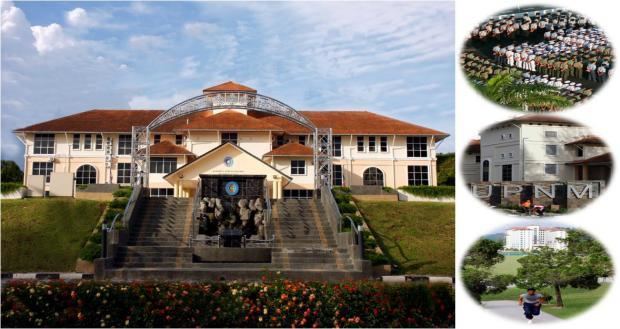
UPNM was originally Akademi Tentera Malaysia (ATMA), or the Malaysian Armed Forces Academy, which was established on 1 June 1995. It was an organisation that offered bachelor's degrees in the fields of engineering, sciences and managements, with military training.

The bachelor's degree courses were accredited and awarded by Universiti Teknologi Malaysia in the beginning. The lecturers came from within the armed forces, some hired by the academy and the rest deputised by UTM.
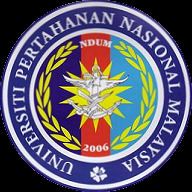
On 10 November 2006, ATMA was upgraded to university status creating the current UPNM. The establishment of the university was announced by the Prime Minister Datuk Seri Abdullah Ahmad Badawi during the Budget 2007 reading in the Malaysian Parliament. The setting up of the university cost RM 500 million and was fully borne by the Government of Malaysia.
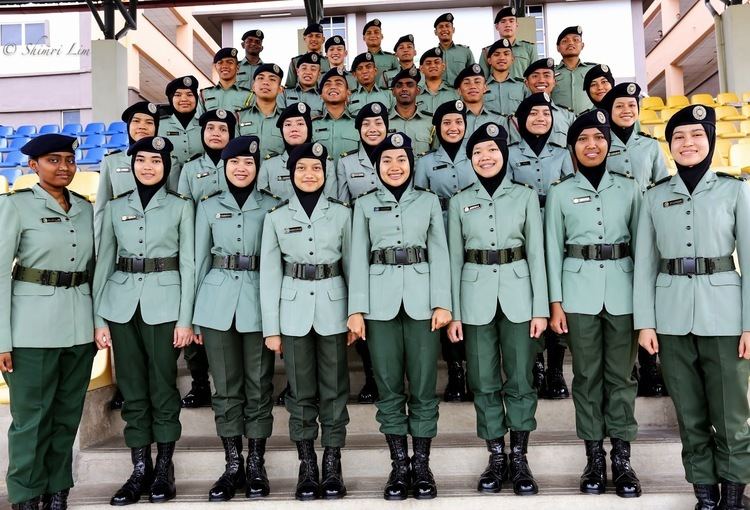
The university's first intake of students was for the 2007/2008 session with new changes by taking the first intake of civilian undergraduates. Though the university was young, it has already chalked up over 11 years of experience in education and training since 1995 with over 1000 graduates in the fields of engineering, computer science and management. These graduates have also been inducted as full officers of the Malaysian Army, Royal Malaysian Navy, Royal Malaysian Air Force, government sectors and non-government sectors.
Location
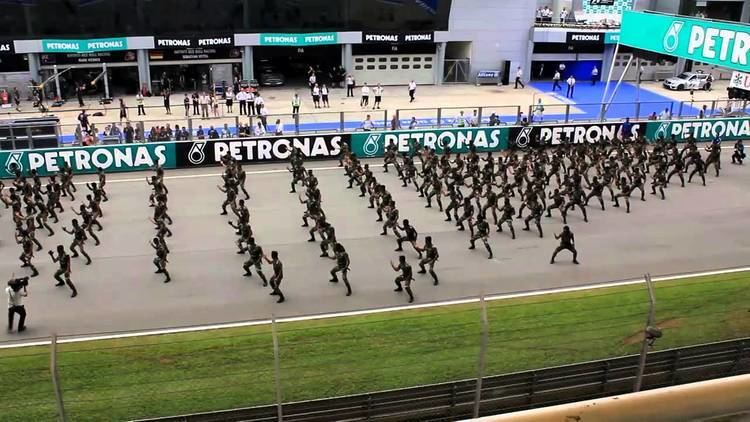
UPNM's main campus is at the Sungai Besi Camp in Kuala Lumpur. The campus was completed in 2002 as part of ATMA.
Academy grounds and facilities
Cadet quarters
1st apartment complex
Echo Valley
2nd apartment complex
3rd accommodation complex
Residential colleges for civilian students
Athletic facilities
The university demands all of its students participate actively in sports. Some of the facilities are :
Chancellory
The former Commandant of ATMA, Lt. General Dato' Wira Ir. Ismail Samion was appointed as the first vice-chancellor of UPNM. His appointment created history in the Malaysian higher education scene as the first military personnel appointed to be vice-chancellor of a local university. Ismail was Commandant of ATMA for six years prior to the appointment.
The current Vice-Chancellor is Jen Tan Sri Hj Zulkifli Hj Zainal Abidin who appointed to the post in 2013.
ATMA Commandants/UPNM Vice-Chancellor 1. Lt Jen Dato' Ismail Hassan 1995 - 1996 2. Mej Jen Dato' Abd Ghani Yunus 1996 - 1997 3. Brig Jen Baharudin Abdul Kadir 1997 - 1997 4. Brig Jen Dato' Adenan Mohamad Zain 1998 - 5. Brig Jen Azizan Ariffin - 6. Lt Jen Dato' Wira Ir. Ismail Samion (VC) 2002 - 2008 7. Lt Jen Dato Pahlawan Hj Zulkifli Hj Zainal Abidin (VC) 2008 - 2010 7. Lt Jen Dato' Wira Allatif bin Mohamed Noor (VC) 2010 - 2013 8. Jen Tan Sri Hj Zulkifli Hj Zainal Abidin (VC) 2013–Present ATMA/UPNM Commanding Officers (CO) 1. Lt Kol Badrulzaman Abd Rani 1995 - 1996 2. Lt Kol Azroie Ahmad 1996 - 1997 3. Lt Kol Mohammad Azudin Othman Fuad 1997 - 1998 4. Kol Mohd Shukuri Ahmad 1998 - 2004 5. Lt Kol 2004 - 2005 6. Lt Kol Ahmad Sazali Sukardi 2005 - 2006 7. Lt Kol Zakaria borhan 2006 - 2009 8. Lt Kol Abdul Aziz Ismail 2009 - 2010 9. Lt Kol Kamal Idris Johari 2010 - 2011 10. Lt Kol Chan Weng Poh 2011 - 2013 11. Lt Kol Wan Azni bin Hj Wan Muhammad 2013–PresentCurriculum
Cadets are educated and graded on their performance in academics, physical fitness, and military leadership.
The academic program consists of a core of 11 courses balanced in the managements, sciences and engineerings. Cadets choose their courses in the end of their foundation year.
The physical program includes physical education classes and competitive athletics. Every cadet participates in an intercollegiate, club or intramural (called Inter-Battalion Sports) level sport each year. As with all soldiers in the Armed Forces, cadets also must pass a physical fitness test (UKA) twice per year. Additionally, during each end year-session, cadets must undergo Single Service Training (LKPT)—which generally is regarded by cadets to be the "worst 6 weeks of the year."
Cadets learn military skills, including leadership, through a military program (LKU) that begins on their first day at the university. Most military training takes place during the end-semester holiday, with new cadets undergoing Cadet Basic Training (LFI) — or "Square bashing". Additionally, cadets are housed in barracks style floor-by-floor management at accommodation blocks and have leadership positions and responsibilities throughout the academic year.
Every mid-semester, the young men and women train at the campus camp; campus fields for physical trainings, 1RAMD obstacle course and shooting range for obstacle course exercise and shooting practice, and RMC's parade ground for drills. In this six-week part of LKU at the campus, the cadets are introduced to a basic firearms and training exercises. The battalions are in command of appointed rank holders and final year cadets. The super-seniors are in officer positions such as Platoon leader and Company commanders. At the end of the six-week UKMHK session, awards are given out to the best battalion based on the best performance at each training site.
Moral-ethical development occurs throughout the formal programs. These include formal instruction in the values of the military profession, religious programs, and interaction with staff and faculty role models. The foundation of the ethical code at the university is found in the institution's motto, "Duty, Honor, Integrity." Cadets adhere to the Cadet Honor Code, which states "A cadet will not lie, cheat, steal, or tolerate those who do."
Academic programme
Defence Engineering Faculty
Defence Sciences Faculty
Faculty of Defence Management Studies
Faculty of Medicine and Defence Health Sciences
Military programme
Besides pursuing an academic programme, students undergo military training. Military training is organised by the ALK. When a new cadet arrives, they undergo a six-weeks induction training (LFI), also called Latihan Tunas Wira. The day a new cadet reports to the institution is called Tunas Wira Day, which is adopted from the R-Day from the West Point Military academy. On the first day, upon registration at Tun Templer Hall, their hair is cut by university barbers, and they collect military uniforms and items from the Quartermaster.
New cadets are shown to their rooms and change to military uniforms for camp orientation and drill training. Their status as an officer cadet will not be confirmed until they finish the induction training period, and meanwhile are called 'Bakal Pegawai Kadet' (soon-to-be cadet) throughout this period. During the period, new cadets are taught military basics such as parade drills, physical training and firearms handling. They are also taught teamwork, perseverance and endurance. Seniors cadets teach them mess etiquette.
New cadets who pass this training are confirmed as an officer cadet and a ceremony is held at the main field. There is a performance, usually a platoon battle drill, in front of the VIPs, officers, senior cadets and parents who are invited to the event. The Vice-Chancellor awards each newly appointed officer cadet the UPNM beret.
The cadets undergo further training as they rise through the ranks at the university. For the army and air force cadets, they learn basic jungle training at Camp Kongkoi, the university's training camp situated in Jelebu, Negeri Sembilan. They learn survival, compass marching and river-crossing training. They are taught the use of firearms such as Minimi and GPMG.
Military training is usually conducted between May to July and November to December, on end of semesters at the break of academic programmes. But cadets still perform training throughout the academic period including daily duties, morning parades, daily sport parades, Wednesday cross country and occasional night events. Unarmed combat training is held on Friday evenings and general military training occupies the whole of Saturday.
The Naval cadets will annually be attached to KD Sultan Idris I, a naval-officers training establishment in Lumut Base located in Perak to undergo their naval training. They will learn naval routines and culture, seamanship, on-job training and naval warfare lessons at the base. For Seaman cadets, they will be attached to Royal Malaysian Navy's warships for six month for their practical training.
For final year cadets, they will undergo more challenging and advanced training. The Zulu, which they are recognised, will undergo a seven-month-long Final Year Military Training (LKTA). They undergo Self-confidence training which includes activities such as confidence training at Commando camp, 10 meter dive, Nuclear, Biological and Chemical (NBC) training and mountain-hiking of Gunung Ledang. They continue with Counter-Insurgency Warfare (CIW) and Conventional Warfare (CW) field exercises which are held as real field exercise, usually in the area of Negeri Sembilan and Pahang. A cadet must complete this training to be commissioned as officers in the Malaysian Armed Forces.
Civilian students register under the Reserve Officer Training Unit (ROTU), and will serve the military as reserves. Their participation in the ROTU is compulsory. The ALK is responsible for their training programme. Civilian students who graduate to bachelor's degree level are commissioned as a military officer with the ranks of Second Lieutenant in the reserve after completing military training.
Rank
Unlike virtually all other bachelor-degree granting institutions in Malaysia (but like the other military academies in Malaysia), the university does not refer to its students as freshmen, sophomores, juniors, or seniors; they are instead called by their year of intake e.g. "2002", "2003", "2004", "20XX".
Colloquially, the freshmen are "tahun asas (basic year)"; sophomores, "tahun satu (year 1)"; juniors, "tahun dua (year 2)"; seniors, "tahun tiga (year 3)"; super-senior, "tahun empat (year 4)". Most cadets consider basic year to be the most difficult because of the rules and restrictions developed to help students transition from civilian to military cadet. However, the third and fourth years are generally considered to be the hardest academically.
Within the university, cadets who reached year three or four can hold positions of increasing responsibility with a cadet rank:
Organization
In the UPNM student organisation, they are divided by two which is Student Representative Council or Majlis Perwakilan Pelajar (consist of military and civilian students) and also rank holder and cadet mess secretariat. see the website of SRC UPNM - *National Defence University of Malaysia Students Representative Council
The cadets have the following organisation:
(The number of cadets is approximate and varies year to year)There are 6 battalions in the Cadet Brigade which are:
All of the battalions, except 'Zulu', are named after five Malay folks heroes. Each battalion has their own identity such as insignia, emblem, motto, song and war dance. Every cadet holds their battalion's pride in high spirit which can be seen during inter-battalion sports or military competition. Lekiu battalion is the battalion for foundation/basic year cadets, who are living with their own intake for a year before reporting to any one of the Tuah, Jebat, Kasturi or Lekir battalion as first year cadets. Zulu Battalion is the battalion for final year cadets prior to their commissioning. A cadet will leave their battalion to join Zulu after a batch of previous Zulu have been commissioned, usually in January.
Admission
Admission to the university is by applying through the Education Ministry's University Central Unit where academic qualification will be evaluated. Candidates then undergo physical, mental and leadership tests for a period of 1–3 weeks which is conducted by the Ministry of Defence.
Admissions requirements
To be admitted, candidates must be between 18 and 20 years old upon entrance, not be married, and have no legal obligation to support a child, and be of good moral character. The process includes a university application, standardised testing, and personal references. Candidates for admission have a physical aptitude test as well as a complete physical exam, including a separate visual acuity test to be eligible for appointment, although medical waivers are available. Usually, candidates with vision uncorrectable to 20/20, as well as a range of other injuries or illnesses, will be automatically considered for a medical waiver only if they are highly competitive.
Graduation
Graduates receive a bachelor's degree and are commissioned as young officers in the Army or equivalent rank in the navy or air force with an obligation to serve 10 years active service in the military. Eligibility for particular specialties (infantry, artillery, armour, engineers, etc.) is determined by academic performance and personal preference. A cadet is a first class graduate if he or she has earned a 3.70 or above Accumulated Grade Pointer Average (CPA), second class if 3.0-3.69 or third class if 2.99 and below.
